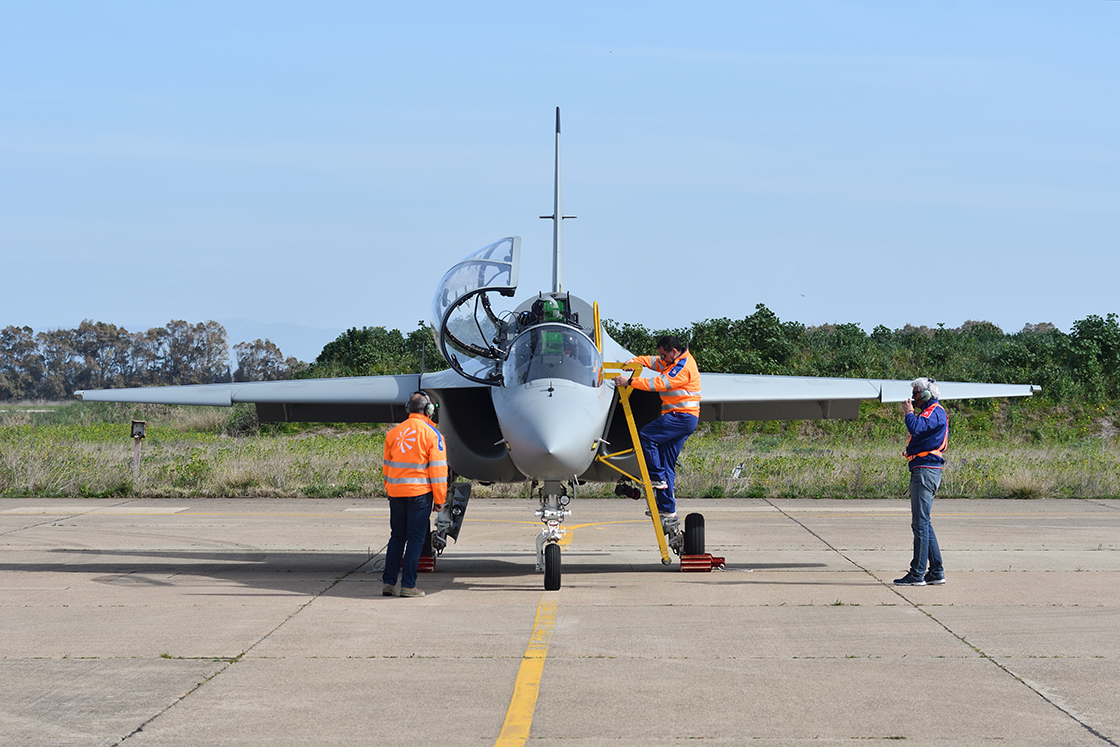The M-346 is a twin-engine, two-seat transonic jet aircraft, with fully digital flight controls and avionics, equipped with a fly-by-wire flight control system with quadruple redundancy and a modern human-machine interface with display for the “head up” (HUD – Head-up Display) and multifunction (MFD – Multi Functional Display) data presentation.
The aircraft is the fulcrum of a training system consisting of an integrated on-board system for the simulation of tactical training (ETTS - Embedded Tactical Training System), which allows the aircraft to emulate sensors, armaments and CGF (Computer Generated Forces) and allows pilots to operate simultaneously, and in a combined manner, in LVC mode: Live (real flight), Virtual (the various types of simulators) and Constructive (interfacing with any type of force/threat generated by the computer).
The system is completed by the GBTS (Ground Based Training System) ground training segment, composed of various flight and mission simulation systems, multimedia and classroom courses, mission planning and training management systems, and an integrated logistic support (ILS) which optimises the management of fleets and simulators to allow maximum operation.

M-346’s full-mission simulator
TECHNOLOGICAL EVOLUTION FOR 21ST CENTURY ADVANCED JET TRAINING
Changing operational scenarios, training times, the costs of flying fifth generation aircraft, the availability of new, more advanced cockpits, with an eye to the next generation of “combat air”: these are all variants that require an update of the entire trainer system, based on a holistic approach that maintains the correct balance between flying skills and information management, within a dynamic system such as training.
Today, digitalisation and artificial intelligence are the enablers of a further evolution that affects both the aircraft and the ground segment, and which will materialise in the new Block 20 configuration of the M-346, in the two Fighter and Trainer versions.
The integrated capabilities of the training system will be enhanced through upgraded state-of-the-art sensors, weapon systems, datalinks, and onboard avionics, as well as enhanced human-machine interfaces through augmented reality systems. All supported by advanced supercomputing capabilities, artificial intelligence algorithms and intrinsic cyber resilience characteristics, with substantial benefits in terms of operational availability of the fleet and integrated services.
The entire training ecosystem will benefit from the update, enhancing its distinctive live/virtual/constructive capacity and confirming itself as the best "incubator" for training the latest generation fighter pilots, capable of dealing with updated training syllabuses and threats emerging in the airspace, with or without a pilot.

International Flight Training School – Decimomannu, Sardinia
THE MAIN TECHNOLOGICAL UPDATES ON THE M-346
Development of a new generation cockpit, which includes:



